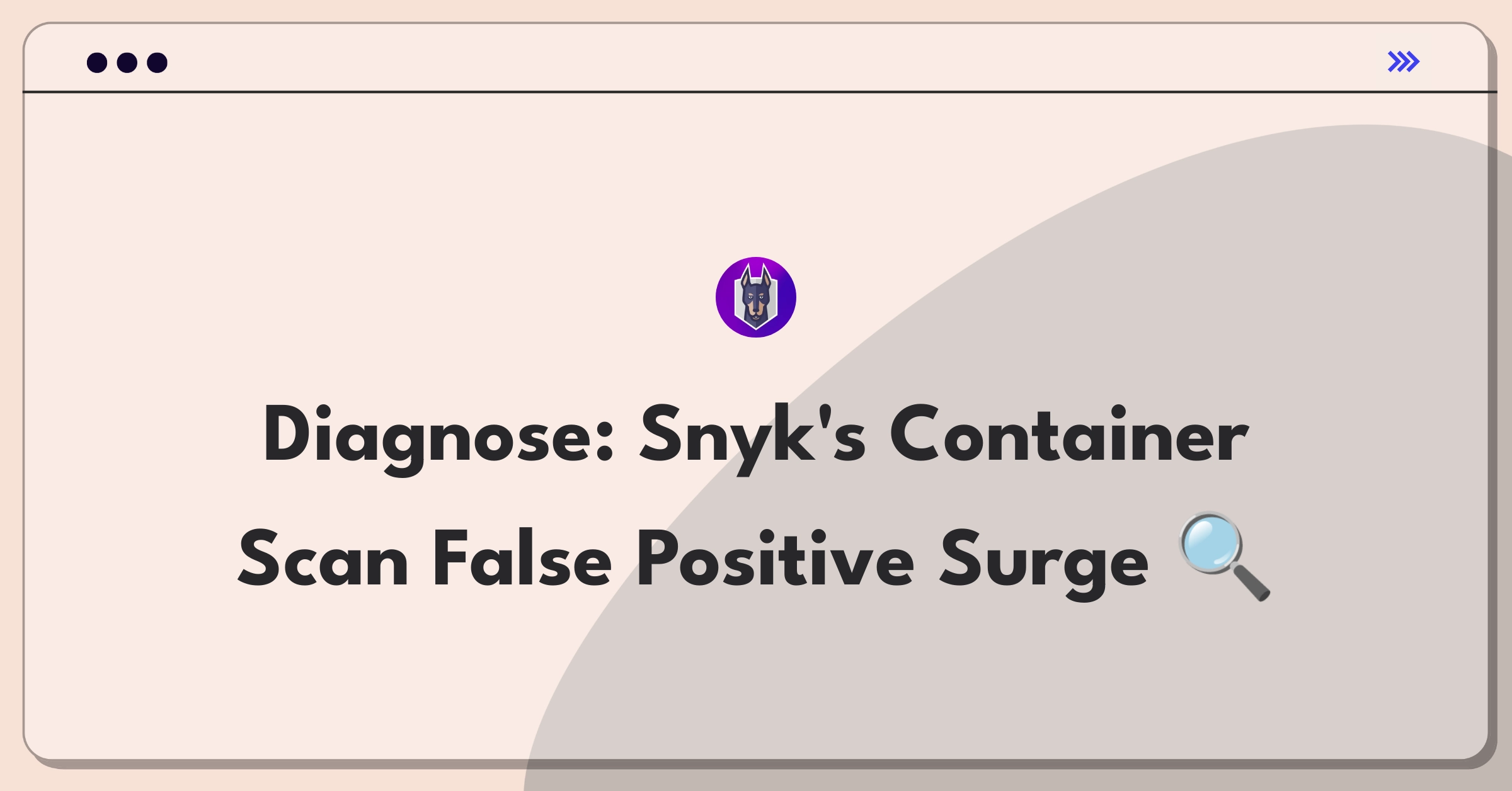Introduction
The sudden increase in false positive rates for Snyk's Container scans over the past two weeks is a critical issue that demands immediate attention. This analysis will systematically identify, validate, and address the root cause while considering both short-term fixes and long-term implications for our container security scanning feature.
I'll approach this problem by first clarifying the context, then ruling out external factors before diving deep into our product ecosystem, metric breakdown, and data analysis. From there, I'll form hypotheses, conduct root cause analysis, and propose a validation and resolution plan.
Framework overview
This analysis follows a structured approach covering issue identification, hypothesis generation, validation, and solution development.
Step 1
Clarifying Questions (3 minutes)
Why it matters: Recent changes could directly impact false positive rates. Expected answer: Yes, there was an update two weeks ago. Impact on approach: If confirmed, we'd focus on the changes made in that update.
Why it matters: Helps narrow down if it's a global issue or specific to certain use cases. Expected answer: The issue is more prevalent in customers using microservices architectures. Impact on approach: We'd investigate how our scanning interacts with complex, multi-container setups.
Why it matters: Ensures we're not dealing with a measurement issue rather than an actual increase. Expected answer: No changes in definition or measurement process. Impact on approach: If confirmed, we'd focus on the scanning process itself rather than metrics.
Why it matters: External changes could be triggering our scans differently. Expected answer: Docker released a new version of their runtime two weeks ago. Impact on approach: We'd investigate how our scans interact with the new Docker runtime.
Subscribe to access the full answer
Monthly Plan
The perfect plan for PMs who are in the final leg of their interview preparation
$99 /month
- Access to 8,000+ PM Questions
- 10 AI resume reviews credits
- Access to company guides
- Basic email support
- Access to community Q&A
Yearly Plan
The ultimate plan for aspiring PMs, SPMs and those preparing for big-tech
$99 $33 /month
- Everything in monthly plan
- Priority queue for AI resume review
- Monthly/Weekly newsletters
- Access to premium features
- Priority response to requested question


.png)